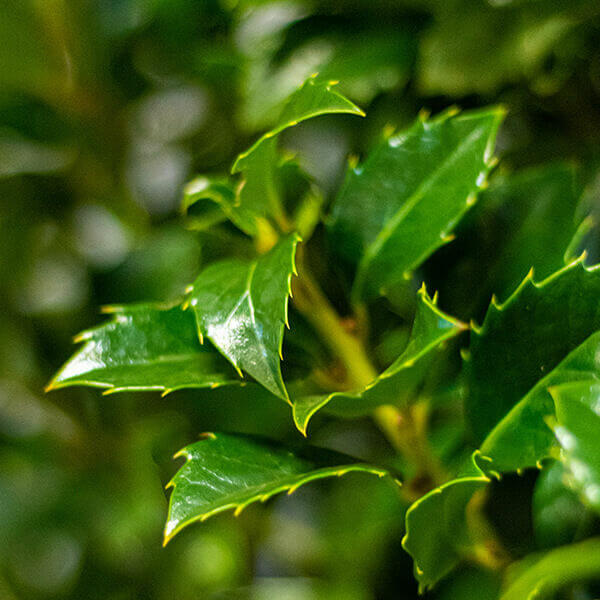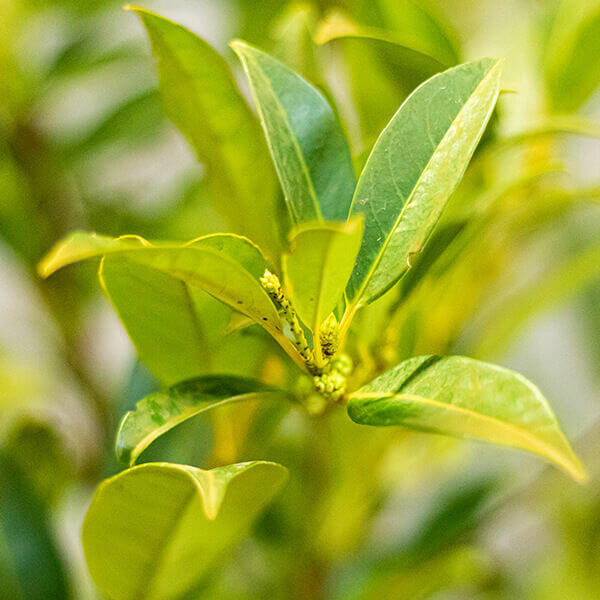Best Hedging Plants For Spring Flowers
Enhance your garden's allure with lavish hedge varieties such as Yew (Taxus), Thuja, Laurel, Photinia, and Bamboo, commemorated for their structural integrity and ecological advantages.
Yew and Thuja provide evergreen coverage and winter strength, while Laurel uses rapid growth and broad, fragrant leaves.
Photinia adds seasonal appeal with its dynamic red foliage, and Bamboo provides a low-maintenance, tranquil atmosphere.
These hedges improve air quality, minimize noise, and develop tranquil, private spaces.
Proper planting, spacing, and maintenance guarantee energetic growth and environmental consistency.
Check out how these lush varieties can raise your garden's appeal and wellness.
Key Takeaways
Transform Your Garden With Lush Hedge Varieties
- Select Yew for its thick, evergreen development and exceptional durability.
- Go with Laurel for its fast growth and broad leaves, guaranteeing fast personal privacy.
- Pick Photinia for its dynamic seasonal foliage, which turns a striking dark red.
- Make use of Bamboo for a low-maintenance, winter-hardy hedge with visual appeal.
- Area plants 2-3 per meter and prune regularly for optimal development and health.
Popular Hedge Plants
When changing a garden with rich hedge ranges, it's vital to consider popular hedge plants such as Yew, Thuja, Laurel, and Photinia due to their unique characteristics and benefits.
Yew (Taxus) is highly esteemed for its longevity and dense, green development, making it a prime option for sustaining landscapes.
Thuja is kept in mind for its evergreen foliage and robust winter season strength.
Photinia includes seasonal vibrancy with red leaves that darken gradually, producing dynamic visual appeal.
Laurel provides fast growth and fragrant, broad leaves, perfect for fast personal privacy.
Furthermore, Bamboo is an exceptional option for ambiance, offering a low-maintenance, winter-hardy option that enhances the garden's aesthetic with its elegant, swaying canes.
These choices accommodate a variety of horticultural needs and choices.
Advantages of Garden Hedges
Garden hedges provide a wide range of benefits, making them a valuable addition to any landscape. These natural barriers are cost-efficient to execute and provide significant wind security, improving air circulation and adding to noise reduction. The thick foliage of hedges like Thuja and Beech ensures personal privacy by blocking visibility, developing a peaceful and secluded environment.
Hedges likewise play an essential function in microclimate policy, providing a steady environment that fosters plant development and minimizes temperature level fluctuations. Their detailed leaf structures filter contaminants, enhancing air quality and contributing to a much healthier garden ecosystem.
Additionally, hedges master sound reduction, taking in and deflecting acoustic waves to lower ambient noise levels. This double performance of offering both visual and acoustic privacy boosts the overall serenity and visual appeal of any garden.
Planting and Maintenance Tips
For an effective hedge, careful preparation of the planting area is important. Make sure the soil has proper pH and drain to support strong root advancement.
Space the plants appropriately for the selected types. Water the hedge frequently during its preliminary development stage, adjusting as needed with seasonal modifications.
Carry out a systematic pest control and disease avoidance strategy, using organic or chemical treatments when essential. Frequently inspect for aphids, mites, and fungal infections.
Apply mulch to keep wetness and reduce weeds. Seasonal pruning promotes thick growth and air circulation, necessary for plant health.
Following these standards will help you cultivate a vibrant, well-kept hedge that boosts the beauty of your garden.
Spacing and Trimming Guidelines
Spacing and Trimming Standards
Correct spacing and trimming are important for cultivating healthy, aesthetically appealing hedges. Sufficient spacing ensures each plant receives adequate nutrients, light, and air flow.
Follow these guidelines for ideal hedge maintenance:
- Spacing: Position hedge plants 2-3 plants per meter to encourage robust development.
- Pruning Methods: Regular pruning is vital for keeping wanted hedge height and shape. Trim new development in summertime and cut back older wood throughout winter.
- Seasonal Care: Adjust cutting techniques and schedules according to seasonal requirements to ensure plant health.
- Hedge Height: Routinely screen and trim to maintain the preferred hedge height and accomplish uniform looks.
Abiding by these actions will guarantee your hedge grows, boosting both the appeal and functionality of your garden.
Choosing the Right Hedge
Selecting the Right Hedge
Selecting the proper hedge includes assessing factors such as fully grown height, foliage density, and environmental resilience. Effective hedge plant selection needs comprehending each species' development qualities and site-specific adaptability.
For instance, Yew (Taxus) offers exceptional longevity and thick growth, while Thuja is significant for its winter resilience. Furthermore, considering upkeep requirements is crucial; fast-growing types like Laurel or Privet demand regular cutting, whereas low-maintenance choices like Bamboo or Ivy may be more suitable for those looking for minimal maintenance.
Environmental elements such as soil type, light availability, and moisture conditions should likewise guide the selection procedure. This careful method ensures the selected hedges will grow, providing both functional and visual advantages to the garden landscape.
Delivery and Planting Recommendations
To ensure your hedge plants flourish, they must be provided by specialized couriers and planted immediately upon arrival.
Follow these necessary steps for successful planting:
- Soil Preparation: Improve the soil with natural matter to improve drainage and nutrient content.
- Planting Depth: Develop a trench two times the width and equivalent to the depth of the root ball.
- Watering Techniques: Water thoroughly after planting, keeping the soil regularly wet however not filled.
- Mulching: Apply a layer of mulch to retain moisture and suppress weeds.
Client Assistance and Service
Offered the crucial function of prompt assistance in horticultural pursuits, our client support team is offered 6 days a week through telephone, e-mail, and social networks to use expert advice and swiftly deal with any concerns. Their commitment to fast reaction times guarantees client fulfillment by solving questions connected to plant health, optimum planting approaches, and upkeep schedules.

-----------------
6 days a week
Within two days
This comprehensive support system, strengthened by an excellent 9.3/ 10 consumer ranking, highlights our commitment to enhancing the gardening experience for every customer.
Regularly Asked Concerns
The Length Of Time Does It Take for Hedge Plants to Establish?
Hedge plants normally need one to 3 years to end up being completely developed, with the exact duration differing by types and growing conditions.
Efficient care during this crucial period is essential for robust growth. Constant watering, vigilant weed control, and proper fertilizer application are pivotal in promoting strong root development.
For example, fast-growing types like Laurel might develop faster, while slower-growing varieties such as Yew may take longer. Persistent maintenance accelerates the establishment process, resulting in dense and healthy hedges.
What Are the very best Hedge Plants for Personal Privacy?
The concern of the very best hedge plants for personal privacy involves assessing evergreen and deciduous options.
Evergreen hedges like Thuja, Laurel, and Cypress provide year-round protection, guaranteeing continuous privacy.
On the other hand, deciduous hedges such as Beech provide seasonal privacy, shedding leaves in cooler months.
Secret maintenance tips for personal privacy hedges include regular cutting, fertilizing in spring, and appropriate spacing-- generally 2 to 3 plants per meter.
Additionally, constant watering and persistent weed removal are vital for promoting healthy, dense development.
Can Hedge Plants Draw In Wildlife to My Garden?
Yes, hedge plants can attract wildlife to your garden by supplying vital benefits like shelter, food, and nesting websites, thus boosting local biodiversity. For example, yew, holly, and laurel are outstanding for attracting birds, while ivy supports a range of insects.
However, it is essential to note that there are some downsides, such as increased maintenance to manage bugs and regular upkeep. Thoroughly selecting and keeping hedge varieties can help stabilize these benefits and disadvantages, ultimately fostering a sustainable and vibrant community in your garden.
Exist Any Flowering Hedge Plants Available?
Yes, there are flowering hedge plants readily available that can enhance the beauty of your garden.
For instance, Elaeagnus, also referred to as Olive Willow, produces fragrant white flowers in the fall, including a touch of elegance.
Photinia, another popular choice, showcases lively red leaves that mature into a rich green, developing a dynamic visual impact throughout the seasons.
To make sure these plants thrive, it's necessary to practice correct pruning techniques and seasonal maintenance, such as trimming brand-new development in the summer and cutting back in the winter.
These steps will assist preserve the health and visual appeal of your blooming hedges.
How Do I Avoid Bugs in My Hedge Plants?
To avoid bugs in hedge plants, employ natural pest control methods and maintain proper hedge care. Introduce useful bugs like ladybugs, which take advantage of hazardous bugs, to produce a well balanced community.
Routinely examine your hedges for click here signs of problem and promptly get rid of any afflicted parts to avoid the spread. Make sure the health of your hedges by using well balanced fertilizers and offering sufficient water.
Use mulching to keep soil moisture and proper spacing to lower plant tension and promote robust growth. These practices collectively assist in decreasing insect problems and maintaining a healthy hedge.
Conclusion
In essence, choosing the best hedge varieties such as Yew, Thuja, and Laurel can transform any garden into a relaxing sanctuary. These plants offer year-round greenery, boost visual appeal, and offer useful benefits like sound reduction and wind protection.
Proper planting strategies, precise spacing, consistent watering, and seasonal trimming are essential for ideal growth.
Trustworthy delivery services and skilled client support make sure a seamless experience from purchase to planting, making it simpler than ever to raise your outside area.
Garden hedges offer a multitude of advantages, making them a valuable addition to any landscape. These natural barriers are cost-efficient to execute and provide substantial wind protection, boosting air circulation and contributing to sound reduction. The thick foliage of hedges like Thuja and Beech makes sure privacy by blocking exposure, creating a tranquil and secluded environment.

Pruning Methods: Regular pruning is essential for keeping preferred hedge height and shape. Trim brand-new development in summertime and cut back older wood throughout winter season.